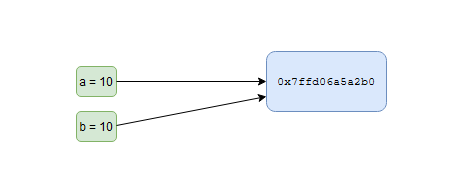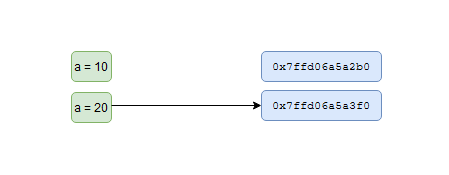Python, immutable data-types and memory management →
I recently started coding in Python as I was playing around with data science, statistics and machine learning libraries. As I started writing more and more Python (Python 3) code, I also started exploring how different it is from C/C++. Although I am very familiar with programming languages like OCaml, Python is giving me more surprising discoveries than in any other languages I have played with. Let us look at some of those together.
First is how Python’s memory management handles immutable and mutable data-types. For beginners, in Python everything is an object. Something declared like
a = 10
results in an int object a that references a memory location. The memory location referenced by the object can be determined by using id() function and by convention you denote it in Hexadecimal number, so one often does hex(id(a)).
Now, let us see what is the memory referenced by our variable (actually a Python object) a.
print('memory referenced by a: {0}'.format(hex(id(a))))
and it returns 0x7ffd06a5a2b0. Now, let us reassign a to value 20. Now, we see that memory referenced has changed to 0x7ffd06a5a3f0, instead of changing the value in the location referenced earlier.
a = 20
print('memory referenced by a: {0}'.format(hex(id(a))))
In programming languages like C or Java, the contents in the memory would be changed. However, in Python a new reference is created to a memory location containing the (updated) value 20. Now our previous int object is not referencing anything and Python’s garbage collector would reclaim it.

